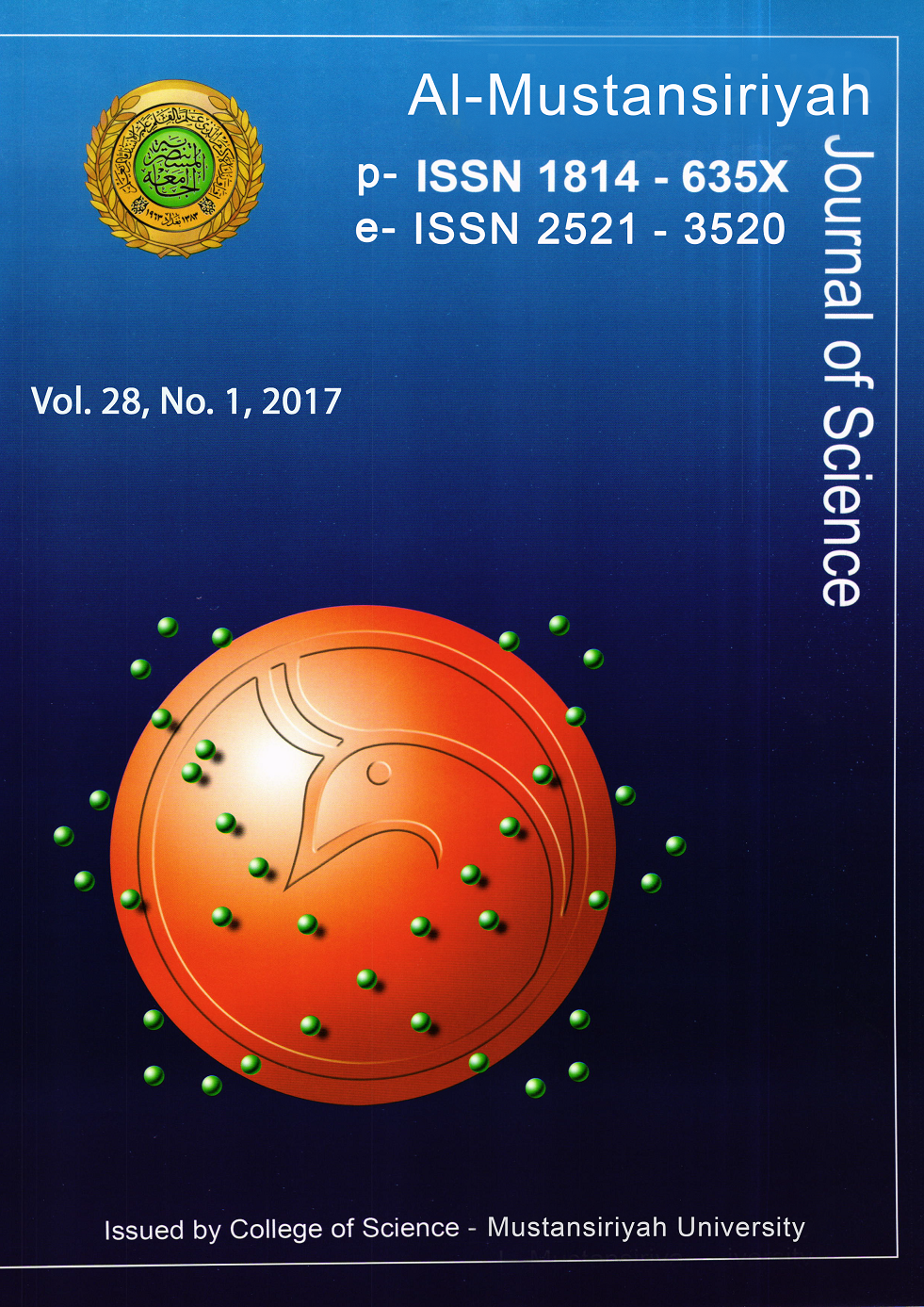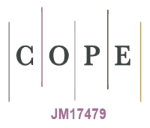Equilibrium and Kinetics Studies of Gentian Violet Dye Adsorption on to Activated Carbon Prepared From Aldhnan Hull
DOI:
https://doi.org/10.23851/mjs.v28i1.318Keywords:
kinetics, equilibrium, Adsorption, Aldhnan hull.Abstract
The present study investigated the key parameters and mechanism affecting the removal of Gentian Violet(GV) dye from aqueous medium, using Activated Carbon(AC) produced from hull of Aldhnan. The AC characterized by FTIR spectra to indicate the surface Characteristic groups of adsorbent affect the adsorption. The pH at point of zero charge showed the anionic nature of adsorbent surface and by using batch mode, the study considering the typical condition for adsorption of GV dye by the AC such as; effect of initial dye concentration, pH and contact time. The adsorption kinetics and equilibrium constants was achieved at 305K and the Langmuir isotherm model fit for the equilibrium data better than Freundlich model. Kinetics of adsorption was studied by testing the data in the pseudo first order (Lagergren Equation) and pseudo second order model and the adsorption of GV dye onto AC obeyed pseudo second order model. Thermodynamic studies exhibit that the adsorption reaction is endothermic in nature and spontaneous.Downloads
References
Jagannadham, M.V.; Rao, V.J. and Shivaji, S. The major carotenoid pigment of a psychrotrophic Micrococcus roseus strain: Purification, structure, and interaction with synthetic membranes. Journal of Bacteriol, vol. 173: 7911‑7. 1991. CrossRef
Greenblatt, C.L.; Baum, J.; Klein, B.Y.; Nachshon, S.; Koltunov, V. and Cano, R.J.. Micrococcus luteus – Survival in amber. Microb Ecol, 48:120‑7.2004
Soliev, A.B.; Hosokawa, K. and Enomoto, K. Bioactive Pigments from Marine Bacteria: Applications and Physiological Roles. Evidence-Based Complementary and Alternative Medicine. Article ID: 670349. 2011
Dunner, W.M. Biofilm, Adhesion seen any good biofilm lately? Clin Microbiol Revie, 15(2): 155-166. 2002. CrossRef
Jacobs, J.L. and Sundin, G.W. Effect of solar UV‑B radiation on a phyllosphere bacterial community. Appl Environ Microbiol, 67:5488‑96. 2001. CrossRef
Bhatnagar, I. and Kim, S.K. Immense Essence of Excellence: Marine Microbial Bioactive Compounds. Marine Drugs., 8(10): 2673-2701. 2010. CrossRef
Liaaen-Jensen, S. and Andrewes, A.G.. "Analysis of Carotenoids and Related polyene Pigments", in "Methods in Microbiology", T Bergan, Editor., Academic Press. pp: 235-255. 1985. CrossRef
Lu, Y.; Wang,L; Xue, Y.; Zhang, C.; Xing, X.H. and Lou, K. Production of violet pigment by a newly isolated psychrotrophic bacterium from a glacier in Xinjiang, China. Biochem Eng J, 43:135‑41. 2009. CrossRef
Nisha, P. and Thangavel, M. UV absorbing cartenoid pigment from marine Micrococcus sp.World J Pharmaceutical Res. 4(9): 1045- 1053. 2015
Jagannadham, M.; Rao, V.J. and Shivaji, S. The major carotenoid pigment of a psychrotrophic Micrococcus roseus strain: purification, structure, and interaction with synthetic membranes. J Bacteriol., 173: 7911-7917. 1991. CrossRef
Song, M.J.; Bae, J. and Lee, D.S., et al... Purification and characterization of prodigiosin produced by integrated bioreactor from Serratia sp. KH-95. J Bioscience and Bioengineering, 101: 157-161.2006
Mohana, D.C.; Thippeswamy, S. and Abhishek, R.U. Antioxidant, antibacterial, and ultraviolet‑protective properties of carotenoids isolated from Micrococcus spp. Radiation Protection and Environment (36) 4 : 168-174. 2013 CrossRef
Hajji, M.; Masmoudi, O.; Souissi, N.; Triki, Y.; Kammoun, S. and Nasri, M. "Chemical composition, angiotensin I‑converting enzyme, (ACE) inhibitory, antioxidant and antimicrobial activities of the essential oil from Periploca laevigata root barks." Food Chem, 121:724‑31. 2010. CrossRef
Mireles, J.R.; Toguchi, A. and Harshey, R.M. Salmonella enterica serovar Typhimurium swarming mutants with altered biofilm-forming abilities: surfactin inhibits biofilm formation. J Bacteriol,183: 5848–54. 2001. CrossRef
Christensen, G.; Simpson, W. and Yonger, J. Adherence of Coagulase negative Staphylococci to plastic tissue cultures: a quantitative model for the adherence of staphylococci to medical device. J Clin Microbiol, 22: 996–1006. 1985
Sosa, V. and Zunino, P. Effect of Ibicella lutea on uropathogenic Proteus mirabilis growth, virulence, and biofilm formation. J Infect Dev Ctries, 3: 762–770. 2009
Stepanovic, S.; Vukovi, D. and Hola, V. Quantification of biofilm in microtiter plates: overview of testing conditions and practical recommendations for assessment of biofilm production by Staphylococci. APMIS, 115: 891–899. 2007. CrossRef
Surekha, P.Y.; Dhanya, P.; Sarath, M.K.; Pradeep, S. and Benjamin, S. Micrococcus luteus Strain BAA2, A Novel Isolate Produces Carotenoid Pigment. Electronic J of Biology, 12(1): 83-89. 2016
Venil, C.K.; Zakaria, Z.A. and Ahmad, W.A.. Bacterial pigments and their applications. Process Biochemistry,48: 1065-1079.2013
Goodwin, T. W. "Chemistry and biochemistry of plant pigments". New York: Academic Press. pp: 225-261. 1976
Song, M. J.; Bae, J. and Lee, D. S., et al... Purification and characterization of prodigiosin produced by integrated bioreactor from Serratia sp. KH-95. J. Bioscience and Bioengineering. 101: 157-161.2006
Umadevi, K. and Krishnaveni, M. Antibacterial activity of pigment produced from Micrococcus luteus KF532949. Int. J. Chemical and Analytical Science, 4: 149-152. 2013
Dung, N.T.; Kim, J.M. and Kang, S.C. Chemical composition, antimicrobial and antioxidant activities of the essential oil and the ethanol extract of Cleistocalyx operculatus (Roxb.) Merr and Perry buds. Food Chem Toxicol, 46 :3632‑9. 2008. CrossRef
Brandão, G. C.; Kroon, E. G.; Duarte, M. G.; Braga, F. C.; de Souza Filho, J. D. and de Oliveira, A.B.. Antimicrobial, antiviral and cytotoxic activity of extracts and constituents from Polygonum spectabile Mart. Phytomedicine, 17:926‑9.2010.
Wu, H.; Moser, C.; Wang, H.; Hoiby, N. and Song, Z.. "Strategies for combating bacterial biofilm infections".
Downloads
Key Dates
Published
Issue
Section
License
(Starting May 5, 2024) Authors retain copyright and grant the journal right of first publication with the work simultaneously licensed under a Creative Commons Attribution (CC-BY) 4.0 License that allows others to share the work with an acknowledgement of the work’s authorship and initial publication in this journal.






















